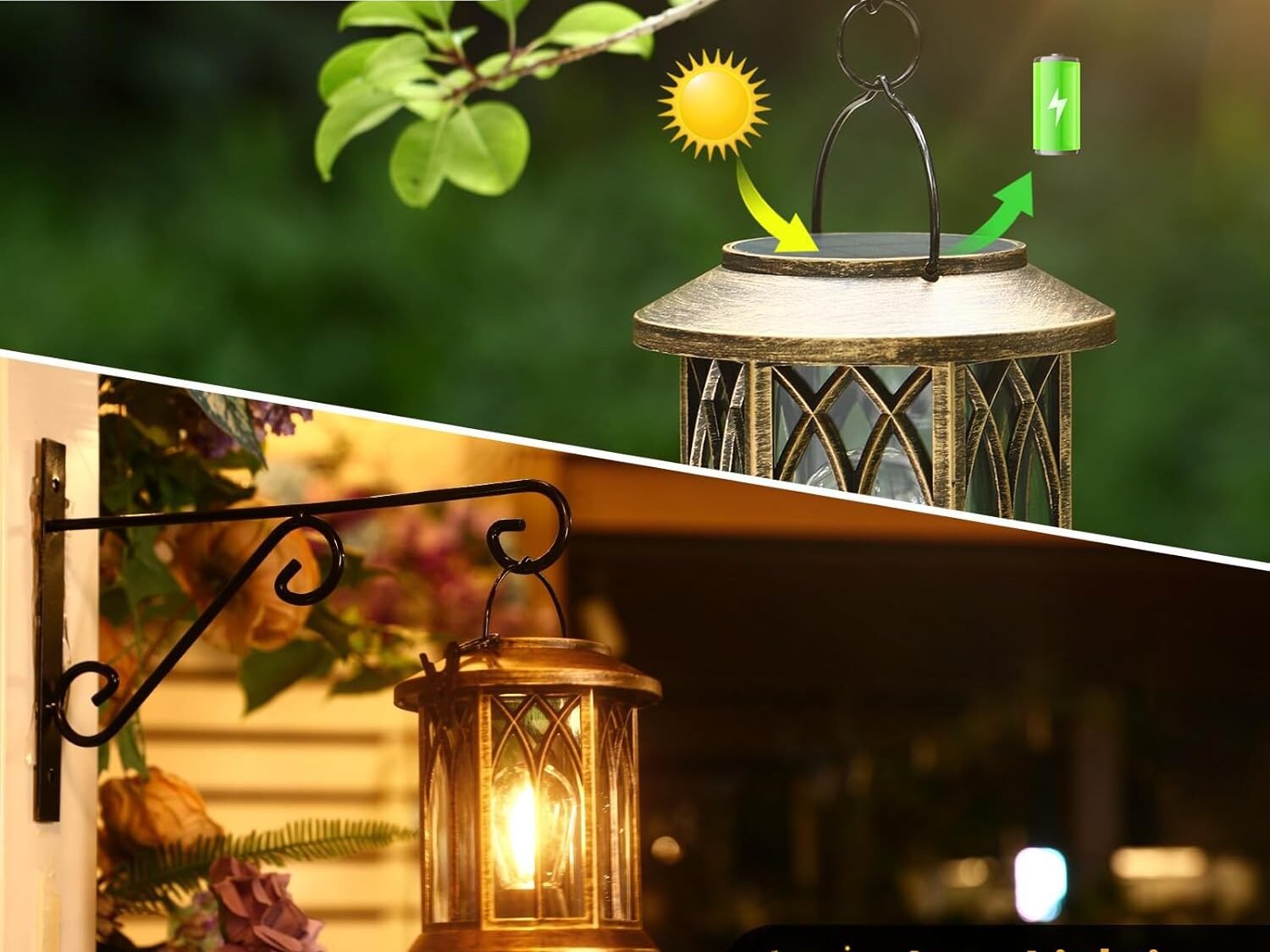
Did you know that the color temperature of your solar lantern can dramatically change the mood of your outdoor space?
In this article, we`ll talk about the guide on solar lantern color temperatures, and explore the fascinating world of warm and cool light, helping you make the perfect choice for your garden, patio, or campsite. Let’s shed some light on this illuminating topic!
What is a Solar Lantern Color Temperature Guide and Why Do You Need One?
Before we dive into the specifics of solar lanterns, it’s essential to understand what we mean by color temperature and why having a guide is crucial for your outdoor lighting decisions. In the world of lighting, color temperature refers to the appearance of light emitted by a bulb or, in our case, a solar lantern. It’s measured on the Kelvin scale, which might sound technical, but don’t worry – I’ll break it down for you.
The Kelvin scale ranges from warm yellows and oranges (around 2000K) to cool blues (6500K and above). Here’s a quick rundown:
- 2000K-3000K: Warm light (yellowish)
- 3500K-4100K: Neutral light (white)
- 5000K-6500K: Cool light (bluish)
You might be wondering, “Why do I need a guide for this?” Well, the color temperature of your solar-powered lanterns can significantly affect the perception and mood of your environment. It’s not just about visibility; it’s about creating the right atmosphere for your outdoor activities. A solar lantern color temperature guide helps you make informed decisions about your outdoor lighting, ensuring you create the perfect ambiance for every occasion.

Warm Light: Creating Cozy Atmospheres
Let’s start with warm light, which typically falls between 2700K and 3000K on the Kelvin scale. When you think of warm light, imagine the soft, golden glow of a sunset or the inviting flicker of a candle. This is the kind of ambiance you can create with warm-toned solar lanterns.
Warm light has several benefits for outdoor spaces:
- It creates a cozy, intimate atmosphere perfect for relaxation.
- It enhances skin tones, making people look healthier and more vibrant.
- It’s less likely to attract insects compared to cooler light temperatures.
Where should you use warm light outdoors? Consider these scenarios:
- On your patio or deck for evening dinners
- Around a fire pit or seating area for gatherings
- Along garden paths for a romantic, magical feel
I recently installed warm solar hanging lanterns on my patio, and the difference was incredible. The soft, golden light transformed the space into a cozy outdoor living room. My friends always comment on how inviting it feels – it’s become our favorite spot for evening chats and nightcaps.
Cool Light: Enhancing Visibility and Security

On the other end of the spectrum, we have cool light, typically ranging from 5000K to 6500K. Cool light mimics daylight, providing crisp, clear illumination that can make colors appear more vibrant and true to life.
The advantages of cool-toned solar lanterns include:
- Improved visibility, making them great for task lighting
- Enhanced perception of blues and greens in your landscape
- A modern, clean aesthetic that complements contemporary outdoor designs
Where does cool light shine? Consider these applications:
- Illuminating walkways and steps for safety
- Lighting up outdoor kitchens or grilling areas
- Brightening large open spaces like driveways or yards
I use cool white LED lanterns to light up my driveway, and they’ve been a game-changer. Not only do they provide excellent visibility when I’m coming home late, but they also serve as a deterrent for potential intruders. It’s like having a well-lit, secure perimeter around my property.

Finding the Sweet Spot: Neutral Light
If you’re torn between warm and cool, don’t worry – there’s a middle ground. Neutral light, falling between 3500K and 4100K, offers a balanced option that combines the best of both worlds.
Neutral-toned solar lanterns are incredibly versatile:
- They provide good color rendering without leaning too warm or cool
- They’re adaptable to various outdoor settings and activities
- They can complement both warm and cool elements in your landscape
Where might you use neutral light?
- In multi-purpose outdoor areas
- To highlight the architectural features of your home
- In spaces where you want good visibility without the starkness of cool light
In my backyard, I’ve used neutral solar pathway lights to create a balanced lighting scheme. They provide enough light to navigate safely while maintaining a pleasant, natural ambiance that doesn’t overpower the warm lighting on my patio or the cool lights by the garage.
Factors to Consider When Choosing Solar Lantern Color Temperature
Choosing the right color temperature for your outdoor solar lighting isn’t just about personal preference (though that’s important too!). Here are some factors you should consider:
- Purpose of lighting: Are you aiming for ambiance or task lighting? Warm light is great for creating an atmosphere, while cool light is better for visibility and security.
- Surrounding environment: Consider the colors in your landscape and outdoor furnishings. Warm light can enhance earth tones and wood, while cool light can make green foliage pop.
- Existing light sources: Think about other lighting in the area, including streetlights or your home’s exterior lights. You’ll want your solar lanterns to complement, not clash with, these sources.
- Seasonal changes: Remember that your perception of light can change with the seasons. What feels cozy in winter might seem too warm in summer.
- Energy efficiency: While all solar lanterns are eco-friendly, cooler temperatures are generally more energy-efficient, potentially extending battery life.
Top Solar Lanterns for Each Color Temperature Range
Now that you understand the importance of color temperature, you might be wondering which solar lanterns to choose. Here are some top picks for 2024:
Warm Light (2700K – 3000K):
- WdtPro Solar Lanterns: With its antique brass finish and warm 2700K light, this lantern adds a touch of nostalgia to any space. Learn more
- AYTPU Firefly Solar String Lights: These delicate string lights emit a soft 2900K glow, perfect for creating a magical atmosphere in trees or along fences. Learn more
Cool Light (5000K – 6500K):
- UBright Solar Outdoor Lights: This powerful 6000K floodlight is perfect for illuminating large areas and enhancing security. Learn more
- Dynaming 6 Pack Dual Use Solar Path Lights: These sleek, modern path lights provide crisp 5500K illumination for safe navigation. Learn more
Neutral Light (3500K – 4100K):
- Collasis solar lantern: This versatile spotlight allows you to choose between 3000K, 4000K, and 6000K, making it perfect for highlighting landscape features. Learn more
- WdtPro Solar Lanterns: With its 4000K light output, this lantern provides balanced illumination for multi-purpose outdoor areas. Learn more
DIY: Customizing Your Solar Lantern’s Color Temperature
For the DIY enthusiasts out there, you’re not limited to the color temperature your solar lantern comes with. Here are some ways you can customize your outdoor lighting:
- Use filters: Gel filters, commonly used in photography, can alter the color temperature of your lanterns. A CTO (Color Temperature Orange) filter can warm up a cool light, while a CTB (Color Temperature Blue) can cool down a warm light.
- Smart solar lanterns: Some modern solar lanterns come with adjustable color temperatures. You can control these with a smartphone app, allowing you to change the ambiance with a tap.
- Mix and match: Don’t be afraid to use different color temperatures in the same space. I’ve created a layered lighting scheme in my backyard by using cool lights for pathways, neutral lights for general illumination, and warm lights for seating areas.
The Impact of Color Temperature on Energy Efficiency
As an eco-conscious homeowner, you might be wondering about the energy efficiency of different color temperatures. Here’s what you need to know:
- Generally, cooler color temperatures are more energy-efficient. This means they produce more lumens (brightness) per watt of electricity used.
- However, the difference in energy efficiency between warm and cool LEDs is relatively small in modern solar lanterns.
- The most significant factor in energy efficiency is the quality of the solar panel and battery, not the color temperature.
So, while cool light might give you a slight edge in efficiency, don’t let that be the deciding factor. Choose the color temperature that best suits your needs and preferences.
Conclusion
Choosing the right color temperature for your solar lanterns can transform your outdoor space from ordinary to extraordinary. Whether you’re aiming for a cozy, intimate atmosphere with warm light or a bright, secure environment with cool light, the perfect solar lantern is out there waiting for you.
Remember, there’s no one-size-fits-all solution – experiment with different temperatures to find what works best for your unique space. Don’t be afraid to mix and match or even invest in adjustable options to cater to different moods and occasions.
So what color temperature do you prefer to use?
FAQ
Q: Can I use different color temperatures in the same outdoor space?
A: Absolutely! Using a mix of color temperatures can create depth and interest in your outdoor lighting design. Just be mindful of how different areas transition into each other.
Q: Will cool light solar lanterns attract more bugs?
A: Generally, cooler (bluer) lights tend to attract more insects than warmer lights. If bug attraction is a concern, opt for warmer color temperatures or look for solar lanterns with built-in bug-repelling features.
Q: How do I maintain my solar lanterns for longevity?
A: Keep the solar panels clean, ensure they receive adequate sunlight during the day, and protect them from extreme weather when possible. Also, consider bringing them indoors or covering them during harsh winter months.
Q: Can color temperature affect my sleep if I have outdoor lighting near my bedroom?
A: Yes, exposure to cool light in the evening can potentially disrupt your circadian rhythm. If you have solar lanterns near sleeping areas, consider using warmer color temperatures or ensuring they’re not too bright.
Q: Are there any regulations about outdoor lighting I should be aware of?
A: Regulations can vary by location, but many areas have laws about light pollution and brightness levels. Check with your local authorities or homeowners association for specific guidelines on outdoor lighting.



